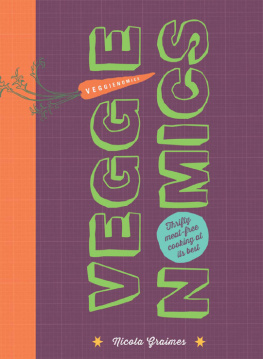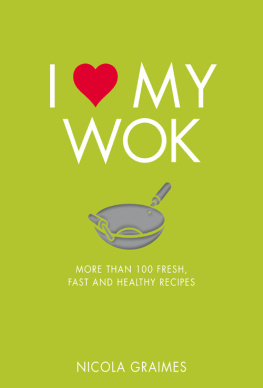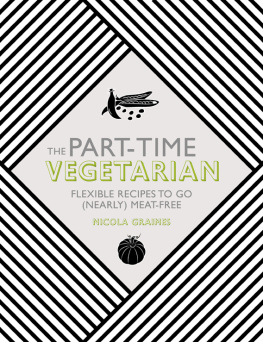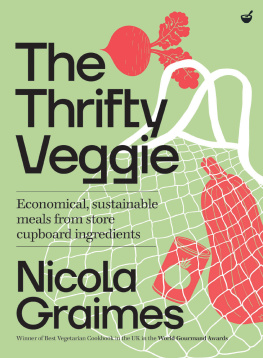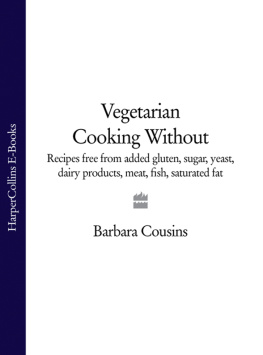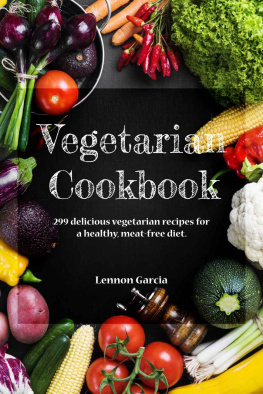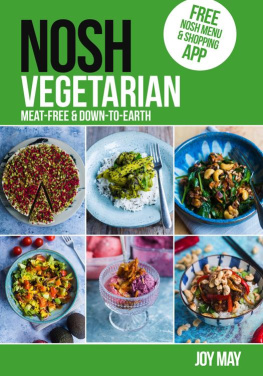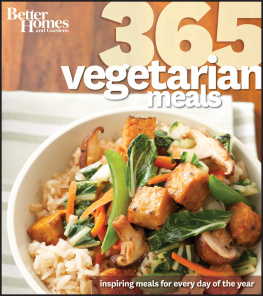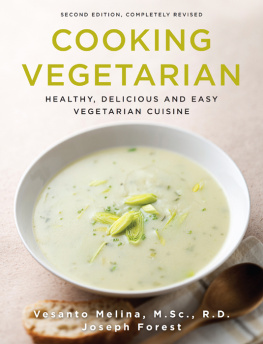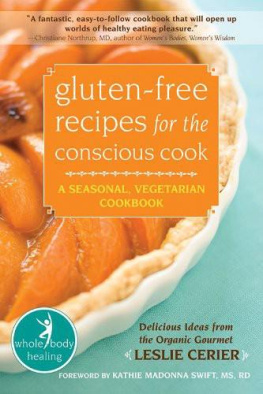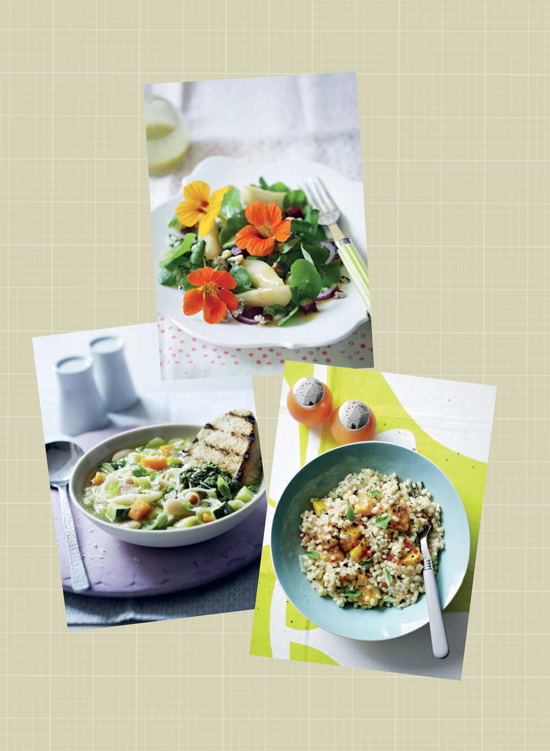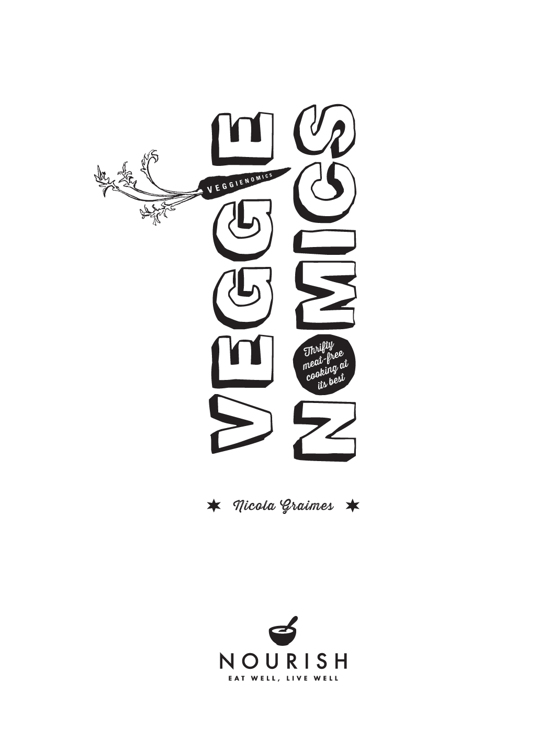Contents
Introduction
In my previous cookbook, New Vegetarian Kitchen, the focus was on experimenting with cooking techniques and ingredients in an adventurous way; playing around with flavors, colors and textures to create a collection of contemporary recipes that utilize the amazing range of foods now available to us. Veggienomics pares things back with a series of recipes that are in tune with the demands of todays home cook: straightforward, simple dishes that dont compromise on good taste, are nutritious and, importantly, dont burn a hole in your pocket.
We are all increasingly aware of the price of food and the environmental cost and inefficiencies of producing meat on a large scale, which is why cooking vegetarianwhether 100 percent or the occasional mealmakes both economic and environmental sense. Additionally, most of us dont have much time to spend shopping or cooking on a daily basis. Veggienomics helps you to plan ahead (making the most of what youve got is crucial when youre on a budget), with advice on shopping, stocking the pantry, making the most of your freezer, using up leftovers, menu planning, growing your own fresh produce and even foraging for free.
Here is a collection of recipes that make use of cooking staples such as beans, legumes, pasta, rice, noodles and grains as well as nuts, cheese, dairy and eggs, supplemented with fresh vegetablesbe they store-bought, homegrown or foraged.
Ive taken a back-to-basics approach, with recipes for making your own stock, spice mix, cream cheese, yogurt, preserves, pickles and syrups, as well as sprouting your own beans. These arent just fun and easy to do, but they also make economic sensethese foods can be pricey to buy. Some figures suggest that in the West we throw away as much as a third of the food we buywhich is why it makes sense to make the most of the food we have by using the freezer, and cooking with leftovers (even just a crust of bread, cheese rind or some surplus cooked veg).
Geared to our busy lives and varying culinary demands, each chapter in the book includes recipes and suggestions for snacks, lunches and dinners. There are also suggestions for matching recipes if you are cooking a whole meal. Where a recipe uses a slightly more unusual ingredient, an alternative is given in case you cant find it. I also like to use the same ingredient in a few recipes so you arent left with a bottle of something languishing in the cupboard.
My original plan for Veggienomics centered around clever shopping and making the most of the weekly trip to the grocery store, but then it blossomed into something wider to include growing your own fresh produce and foraging, both favorite pastimes of mine. This book isnt about living off the land big stylerather it is intended to give you a taste of whats feasible from a small plot, or by discovering your local environment.
I wouldnt say Im a big-time gardener, but I like to grow a selection of veg and herbs at home and share a garden plot with a few friends, where we have had a good rate of success. Its not only immensely satisfying, but also extremely therapeutic when you otherwise spend much of your time in front of a computer. Similarly, my interest in foraging was initially spurred on after finding some spectacular porcini mushroomsit doesnt get much better than that!
So if you want to cut down on the amount of meat you eat on a weekly basis (or even cut it out of your diet altogether), and watch what you spend on your grocery bill, I hope that you will agree that Veggienomics includes recipes to inspire without costing a fortune.
STOCKING THE PANTRY
Pantry ingredients form the cornerstone of the recipes. Youll find that you have the foundations of many good meals, and only have to buy the fresh ingredients to supplement them.
If you eat pasta, rice, beans and lentils on a weekly basis it makes economic sense to buy them in bulk. If you dont eat them regularly enough to buy large quantities for yourself, share large bags with family and friends. Its also possible to buy some dried foods in loose form, meaning you can buy exactly the amount you need and dont have to pay for fancy packaging.
Rice and Grains
A staple food for over half the worlds population, rice features in many cuisines: think Italian risotto, Spanish paella and Middle Eastern pilafs, not forgetting Asian food.
The two main ways to cook rice are the open boiling method, where you cover the rice with plenty of water, then drain it when cooked, and the absorption method. I tend to go for the latter, as taught to me by the rice connoisseur Sri Owen, as I find it gives perfectly cooked, fluffy rice.
To cook long-grain rice for four people by the absorption method, thoroughly rinse 1 cup rice to remove excess starch. Put the rice in a saucepan and cover with 2 cups water and teaspoon salt (the water should be about inch above the top of the rice). Bring to a boil, uncovered, then turn the heat down to its lowest setting, cover with a lid and simmer 10 minutes, or until the water has been absorbed and the rice is tender. Remove the pan from the heat and let stand, covered, 5 minutes. Fluff up the grains with a fork before serving.
While rice, in its many forms, reigns supreme in the world of grains, there are so many more types to choose from when stocking a pantry: barley, bulgur, couscous, buckwheat, oats, polenta and quinoa are all worthy of mention and inexpensive. Barley is great in hearty soups and stews, and also makes a good alternative to rice in risotto and paella. I like to use protein-rich quinoa, or buckwheat, bulgur or couscous, to serve with tagines and stews as well as in salads and pilafs. Polenta and oats make a lovely crispy crust for fritters, croquettes and burgers.
Pasta and Noodles
Long or short, thick or thin, smooth or ridged, curly or straightthere is a plethora of shapes and sizes of dried pasta to choose from. The choice may feel intimidating, but the general rule is that the pasta shape should work in harmony with the accompanying sauce. Perfect pasta pairings include thin, long pasta such as spaghetti and linguine with olive oil-based sauces, and thicker strands with cream and tomato sauces, while heavy, chunky sauces require a sturdier, shorter shape such as rigatoni or penne. Ridged or curly shapes are good for capturing sauces, giving them something to cling on to. It makes sense to have a varied selectionbut then again you dont want too many open bags, containing not enough pasta to make a decent-sized meal!
When cooking pasta, immerse it (a decent serving is 1 heaped cup dried pasta per person) in plenty of boiling water to prevent it sticking. Salt the water generously (about 1 tablespoon per 4 cups); the water should be as salty as the sea. Stir the pasta occasionally to prevent it sticking, and keep the water at a rolling boil. When draining pasta, reserve a little of the cooking water to loosen the accompanying sauce, if necessary.
While noodles also come in a range of lengths and thicknesses, it tends to be the type of grain used, rather than the shape, that defines how they are cooked and served. Egg noodles and chunky udon work in stir-fries, while lighter rice and soba noodles suit soupy broths and Asian salads.
Beans and Lentils
Dried beans and lentils are essential staples in my kitchen. Extremely economical and nutritious, it pays to buy them in bulk if they are a regular part of your diet. Look for smooth, plump dried beans, and store them in an airtight container in a cool, dark cupboard where theyll keep best up to a year. Keep an eye on the use-by date, as beans become tough when old.

